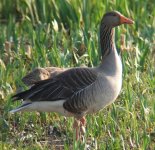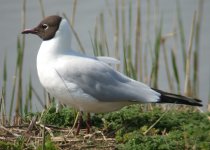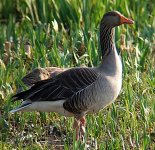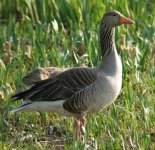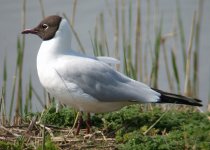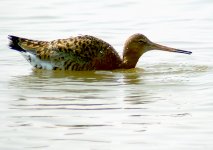NoSpringChicken
Well-known member

I have a cheap digiscoping system comprising an Acuter 65mm scope and a Fuji F30 camera.
So far the results have been a bit disappointing. Although the exposure is normally good I have been unable to produce a single really sharp photo. I realise this may be due to the limitations of the scope but I wondered if there is anything I am doing wrong.
I locate the camera by attaching it to the mount, switching it on and then moving it backwards or forwards until the vignette has a nice crisp edge to it. This is about 5mm from the eyepiece. A small amount of zoom on the camera clears the vignette. Is this the correct procedure?
I use the aperture priority mode on the camera and normally choose the widest aperture setting, although this is limited in the telephoto position.
I normally use the Multi (Pattern) metering and Spot focussing modes. Is this correct?
I use the Macro setting (5cm-80cm although this is limited to 30cm-80cm with the zoom). I don't think there is an Infinity focussing setting on the F30. Is this correct?
To take a photo, I focus the scope by viewing the camera's lcd and using a magnifying glass lens. I use the 2 second timer on the camera. I have read that it is normal practice to refocus the scope with the shutter button depressed halfway but this is not possible when using the lens. Could this be the problem?
I still don't understand what the camera is focussing on with the autofocus. Is it the eyepiece lens or the focussing point of the image, wherever that is?
Finally, on a quick scan I can't find the maximum permissible size of attachments as I could attach a couple of sample photos.
Any help would be most welcome.
Ron
So far the results have been a bit disappointing. Although the exposure is normally good I have been unable to produce a single really sharp photo. I realise this may be due to the limitations of the scope but I wondered if there is anything I am doing wrong.
I locate the camera by attaching it to the mount, switching it on and then moving it backwards or forwards until the vignette has a nice crisp edge to it. This is about 5mm from the eyepiece. A small amount of zoom on the camera clears the vignette. Is this the correct procedure?
I use the aperture priority mode on the camera and normally choose the widest aperture setting, although this is limited in the telephoto position.
I normally use the Multi (Pattern) metering and Spot focussing modes. Is this correct?
I use the Macro setting (5cm-80cm although this is limited to 30cm-80cm with the zoom). I don't think there is an Infinity focussing setting on the F30. Is this correct?
To take a photo, I focus the scope by viewing the camera's lcd and using a magnifying glass lens. I use the 2 second timer on the camera. I have read that it is normal practice to refocus the scope with the shutter button depressed halfway but this is not possible when using the lens. Could this be the problem?
I still don't understand what the camera is focussing on with the autofocus. Is it the eyepiece lens or the focussing point of the image, wherever that is?
Finally, on a quick scan I can't find the maximum permissible size of attachments as I could attach a couple of sample photos.
Any help would be most welcome.
Ron




